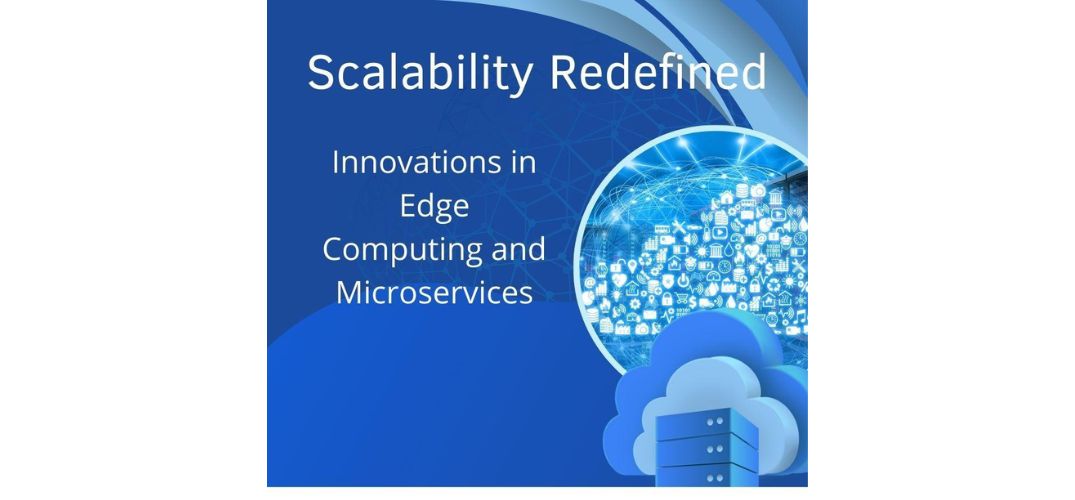In this era of rapid technological advancement, scalability and efficiency are paramount to meet the demands of increasingly decentralized digital ecosystems. Edge computing and microservices have emerged as transformative paradigms, offering innovative solutions to address these challenges. Venkata Durga Ganesh Nandigam, a forward-thinking technology innovator, has delved deeply into this space, presenting groundbreaking insights that are shaping the future of computing infrastructure. His work underscores the potential of these technologies to redefine operational efficiency and scalability.
Beyond Traditional Scalability
The traditional dependence on centralized cloud infrastructure is proving insufficient to meet the growing demands of modern data-intensive applications. Edge computing, when paired with microservices, offers a transformative solution. By processing data closer to its sources and end-users, edge computing drastically reduces latency, boosts response times, and cuts down on data transmission costs. This decentralized approach also helps alleviate network congestion, ensuring smooth and uninterrupted performance. Together, these technologies enable real-time responsiveness, making them indispensable for applications that demand speed and reliability.
Microservices: The Backbone of Modern Applications
Microservices architecture revolutionizes software development by breaking down large, monolithic systems into smaller, independent modules, each dedicated to a specific function. This modular approach allows teams to work on multiple components simultaneously, significantly accelerating development and deployment timelines. The architecture also enhances fault isolation, ensuring that a failure in one module does not disrupt the entire system, providing users with seamless experiences. Moreover, it simplifies scaling, as individual services can be optimized or expanded as needed, without requiring extensive changes to the overall system infrastructure.
Enabling Real-Time Decision-Making at the Edge
Edge computing shines in environments demanding real-time decision-making, including autonomous vehicles, industrial automation, and smart city operations. By processing data locally, edge devices eliminate the latency caused by transferring information to and from centralized servers, ensuring faster and more efficient responses. This localized approach enhances performance, enabling critical systems to operate seamlessly. Additionally, it caters to applications with strict data privacy needs, as sensitive information can be analyzed and securely stored closer to its origin, reducing exposure and aligning with regulatory compliance requirements.
The Synergy of Edge and Microservices
The true power of edge computing emerges when paired with microservices, creating a decentralized, flexible, and highly scalable ecosystem. Microservices enable rapid deployment of updates and new features, providing businesses with the agility to adapt quickly to evolving market demands. Edge computing enhances this framework by ensuring these advancements are executed with minimal latency, enabling seamless real-time operations. This powerful combination empowers organizations to deliver exceptional services, drive innovation, and sustain a competitive advantage in today’s dynamic digital environment, where speed and adaptability are paramount for success.
Overcoming Challenges with Innovation
While edge computing and microservices offer remarkable benefits, their implementation is not without challenges. Security risks, complex management, and ensuring seamless interoperability among diverse systems remain significant concerns. However, innovative solutions are paving the way to overcome these obstacles. Containerization technology simplifies deployment, making it easier to manage distributed systems. Advanced orchestration tools provide streamlined workflows, improving operational efficiency. Furthermore, robust encryption methods and zero-trust security frameworks bolster the protection of decentralized systems, ensuring that these technologies remain both secure and reliable for widespread adoption.
The Future: Intelligent and Adaptive Systems
As edge computing and microservices advance, the emphasis is increasingly on building intelligent, adaptive systems that respond dynamically to user needs. By integrating machine learning algorithms at the edge, devices gain the ability to predict user behavior, optimize processes, and make autonomous decisions in real time. These capabilities significantly enhance operational efficiency while enabling new possibilities for personalized and context-aware services, such as smart home automation, tailored healthcare solutions, and adaptive industrial workflows.
In conclusion, Venkata Durga Ganesh Nandigam emphasizes that the integration of edge computing and microservices signifies a revolutionary shift in computing infrastructure. These technologies effectively overcome the limitations of traditional systems while unlocking new possibilities for connectivity and operational efficiency. By setting unprecedented benchmarks in scalability and performance, they are positioned to drive innovation across industries. As advancements continue, this powerful combination is set to reshape the technological landscape, fostering a smarter and more adaptive future.



































